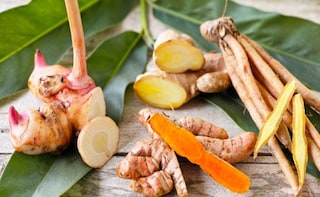With its gnarled body, fibrous, greenish-pink shoots and coarse, reddish-brown skin, galangal ranks high on my list of peculiar-looking ingredients. Thanks to its sweetly tart and peppery flavor, its piney aroma and the unique tang that it adds to foods, it also snags a top spot on my lineup of favored spices.
Advertisement
Advertisement
Advertisement
Advertisement
For the latest food news, health tips and recipes, like us on Facebook or follow us on Twitter and YouTube.
Advertisement
